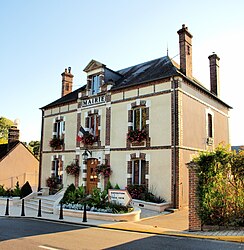켈세야
Kelseya| 켈세야 | |
|---|---|
 | |
| 꽃의 켈세야유니플로라 | |
| 과학적 분류 | |
| 킹덤: | 플랜태 |
| 클래드: | 기관지동물 |
| 클래드: | 안기오스페름스 |
| 클래드: | 에우디코츠 |
| 클래드: | 로시즈 |
| 순서: | 로잘레스 |
| 패밀리: | 로사과 |
| 속: | 켈세야 (S.Watson) Rydb. |
| 종: | K. 유니플로라 |
| 이항식 이름 | |
| 켈세야유니플로라속 라이드브. | |
켈세야(Kelseya)는 로제과과에 속하는 꽃식물의 단형식물이다.유일한 종은 켈세야 유니플로라다.[1]흔히 원플라워 켈세야(oneflower kelseya),[2][3] 나선 또는 고산 월계수라고 부른다.이 속은 1888년 타운젠드 근처의 "산문"에서 이 식물을 발견한 몬태나 주민 식물학자 프랜시스 던컨 켈시를 기리기 위해 붙여졌다.[4][5]
설명
켈세야유니플로라는 1500~3500m 고도에서 화산 및 석회암 아웃크로프 균열에서 자라는 다년생 석회암 풍토다[2].[6][3]그것은 미국 북서부의 3개 주, 아이다호, 몬타나, 와이오밍에서 자생한다.[2]그것은 전형적으로 태양으로 노출된 위치에서 하위 스럽을 덮고 있는 지반으로서 외딴 식물로 자란다.이 종은 또한 이교도 삼림지에서도 보고되었지만 이것은 특출한 것으로 간주되어야 한다.[7][8]그들의 가장 다산한 성장은 비건 산맥의 사우스 서밋 헌트 산에서 이루어지며, 그곳에서 카르스트 산에서 자란다.[9]
이 종은 키가 10cm 이상인 경우는 드물지만 지름 1m 이상을 달성하는 경우가 많다.[2][6]그들의 습관은 방석식물 공동체와 함께 자라는 바람에 노출된 바위 굴곡에 적응하는 것이다.[10]식물은 잎이 빽빽하게 돋아 있는 수많은 가느다란 줄기로 가지를 친다.잎은 옅은 회색빛에서 회색빛이 도는 초록색, 가죽이 많고 털이 많고 난산이 길고 빽빽한 로제트로 자란다.잎은 시들면 검게 갈색으로 변하며 나뭇가지에 남아 단단해진 보호 구조를 형성한다.[3][6]나뭇가지들은 바위의 갈라진 틈으로 수분을 모으는 미세한 털을 가지고 있다.[9]
고독한 말단꽃은[11] 매우 이른 봄에 생산되며, 분홍빛이 도는 흰색에 이르기까지 적갈색이다.[12][9]꽃은 일반적으로 눈이 녹으면서 열린다.[13]5개의 세팔은 길이가 2mm에 불과하며, 5개의 꽃잎은 길쭉하게 타원형으로 길쭉하고 분홍색 계열의 색조를 광고한다.7에서 12개의 수술은 꽃잎보다 약간 길다.[14]
아주 초기부터 이들 식물이 로사과 내에서 특출한 집단을 형성하고 페트로피툼과 에리오기니아(현재의 루에케아)와 함께 에리오기니아속 내에서 단위로 취급되고 있는 것이 분명했다.[15]여러 차례의 수정과 분자 분석 후에 그들은 현재 스피래이족의 일원이 되었다.[16][17]
식물 키의 감소와 황갈색 고산 서식지는 고산 정원 애호가들에게 인기 있지만 도전적인 대상이다.[18]
보존 상태
켈세야 유니플로라는 전 세계 네이처서브 보존 상태가 "보안"인 것으로 보고되었다.그러나 그것의 국제적 위상은 1987년부터 시작되어 재검토가 필요하다.[19]
그것이 발생하는 세 가지 상태에서 그 상태는 다음과 같다.
- 아이다호: SNR(상태 등급 없음)
- 몬태나: S4(분명히 보안)
- 와이오밍: S2(임페라일)
2006년 몬태나주와 와이오밍주의 자연주의자들은 이 종의 지역 개체군에서 발생한 명백한 다이백에 대한 그들의 발견을 보고하도록 요청 받았다.저자는 비슷한 생태적 틈새에서 서식하는 종인 페트로피톤 세스피토섬에서도 같은 일이 벌어졌다고 언급했다.[13]
참조
- ^ "Kelseya (S.Watson) Rydb. Plants of the World Online Kew Science". Plants of the World Online. Retrieved 26 May 2021.
- ^ a b c d "Kelseya uniflora (S. Watson) Rydb". United States Department of Agriculture. Retrieved 29 July 2021.
- ^ a b c "Kelseya uniflora". Flora of North America. Flora of North America Association. Retrieved 29 July 2021.
- ^ Lesica, Peter (Winter 2007). "Kelseya uniflora, the MNPS Mascot"" (PDF). Kelseya - Newsletter of the Montana Native Plant Society. 4 (1): 1. Retrieved 30 July 2021.
- ^ Proceedings of the American Academy of Arts and Sciences, Volume 25. Metcalf and Company. 1890. p. 130. Retrieved 2 August 2021.
- ^ a b c "Kelseya uniflora". The Alpine Garden Society Plant Encyclopedia. The Alpine Garden Society. Retrieved 29 July 2021.
- ^ Bighorn Canyon National Recreation Area (N.R.A.), General Management Plan (GMP) and Wilderness Recommendation (MT,WY). U.S. Department of the Interior. 1981. p. 93. Retrieved 2 August 2021.
- ^ Johnson, Tim (23 July 2019). CRC Ethnobotany Desk Reference. CRC Press. p. 56. ISBN 9781351087841. Retrieved 2 August 2021.
- ^ a b c "Kelseya uniflora". Mountain Flora Hikes. Mountain Flora Hikes. Retrieved 4 August 2021.
- ^ Locklear, James H. (9 March 2011). Phlox: A Natural History and Gardener's Guide. Timber Press. p. 223. ISBN 9780881929348. Retrieved 2 August 2021.
- ^ "One-flower Kelseya - Kelseya uniflora". Montana Field Guide. Montana Natural Heritage Program. Retrieved 5 August 2021.
- ^ Ahlenslager, Kathy (Winter 2007). "Kelseya uniflora" (PDF). Kelseya. Retrieved 2 August 2021.
- ^ a b McCracken, Clayton (Summer 2006). "Is the Kelseya dying?" (PDF). Kelseya. 19 (4): 3–4.
- ^ Lis, Richard. "Kelseya Rydberg in N. L. Britton et al". Flora of North America. Retrieved 5 August 2021.
- ^ Proceedings of the American Academy of Arts and Sciences, Volume 25. Metcalf and Company. 1890. p. 131. Retrieved 2 August 2021.
- ^ Potter, Dan; Still, Shannon (Winter 2007). "Phylogenetic position of Kelseya based on molecular data" (PDF). Kelseya. Retrieved 2 August 2021.
- ^ Dan, Potter (2007). "Phylogeny and classification of Rosaceae". Plant Systematics and Evolution. 266 (1–2): 5–43. doi:10.1007/s00606-007-0539-9. S2CID 16578516.
- ^ R. Kruckeberg, Arthur; Chalker-Scott, Linda (12 March 2019). Gardening with Native Plants of the Pacific Northwest (3 ed.). University of Washington Press. p. 273. ISBN 9780295744865. Retrieved 2 August 2021.
- ^ "Kelseya uniflora". NatureServe. NatureServe. Retrieved 4 August 2021.
외부 링크
| 위키미디어 커먼즈에는 켈세야와 관련된 미디어가 있다. |


